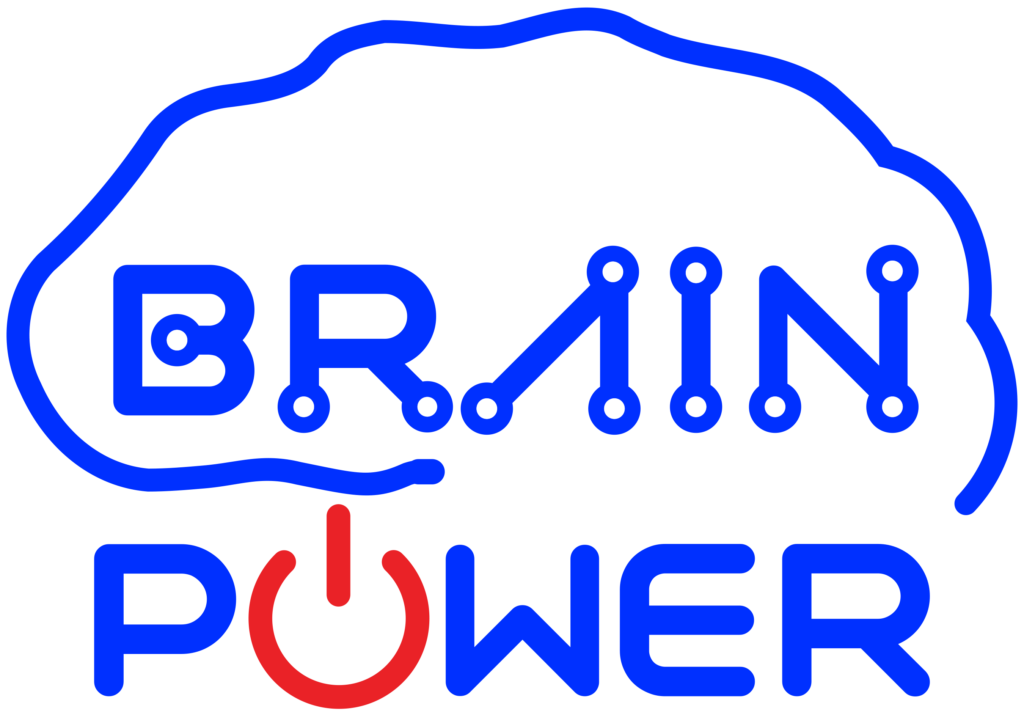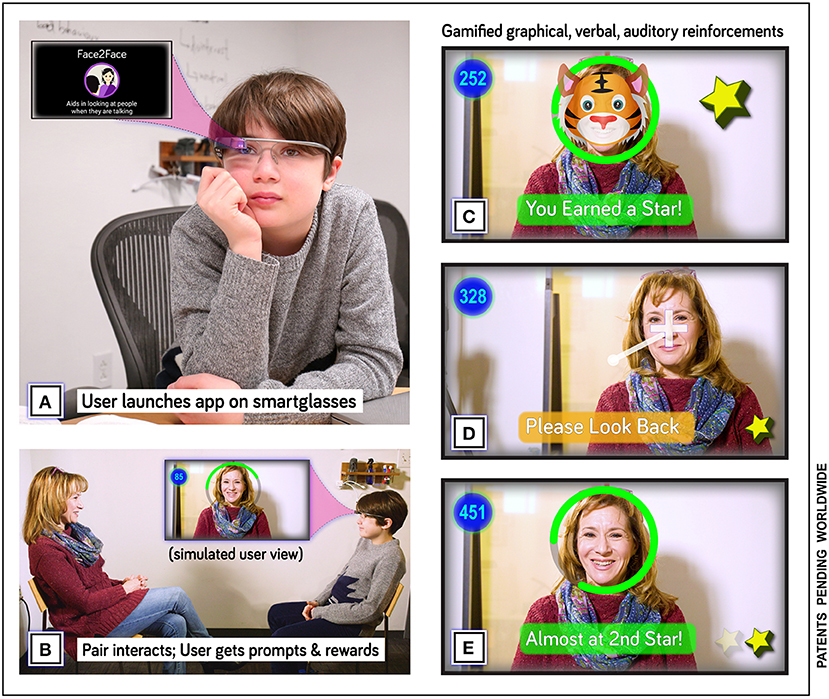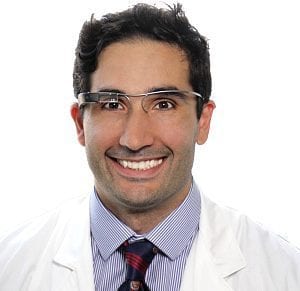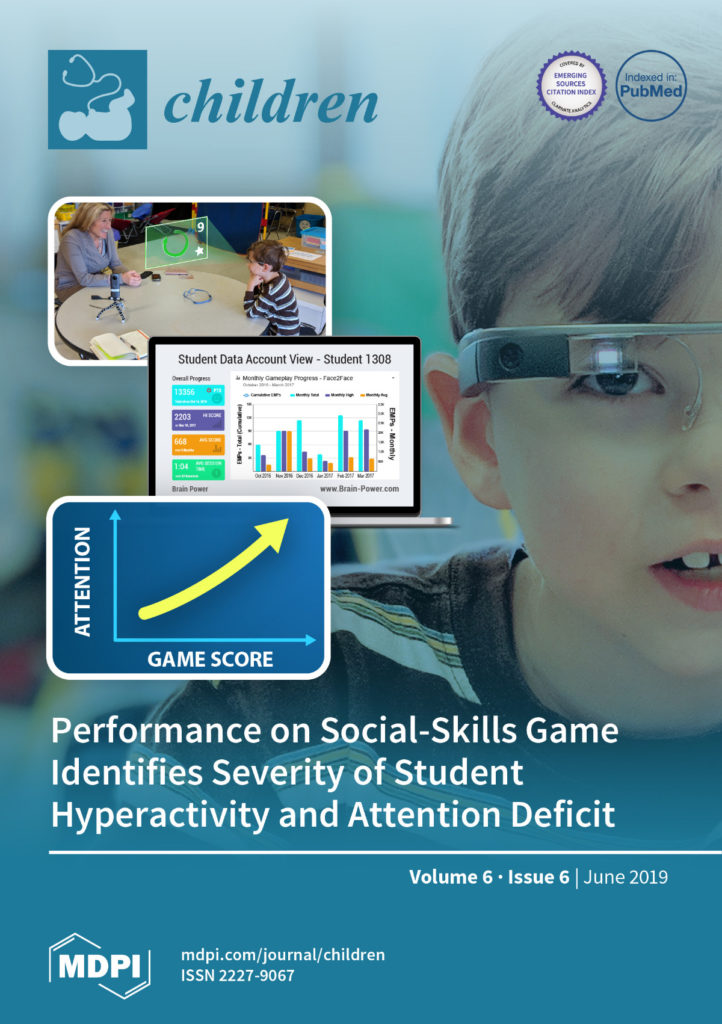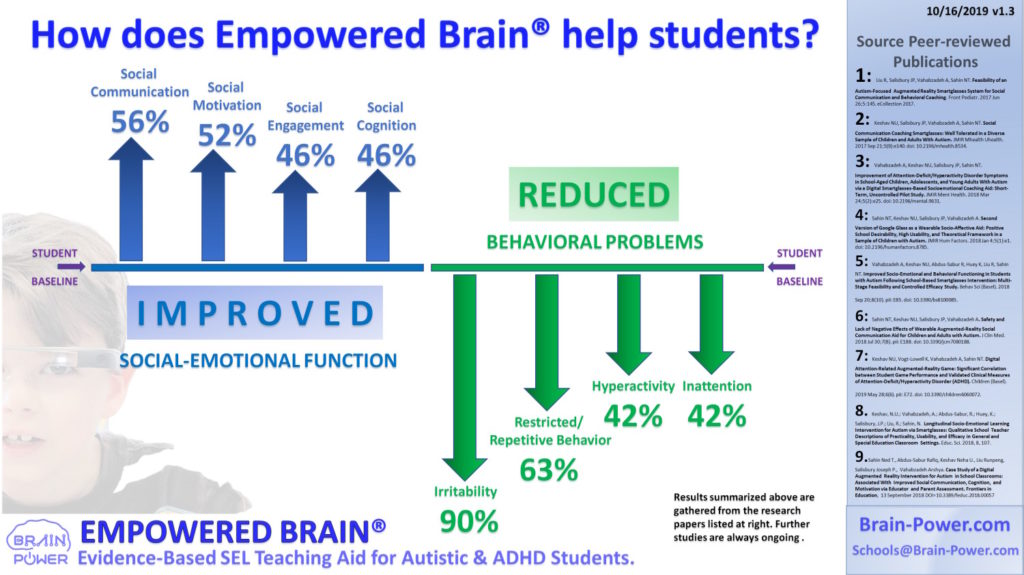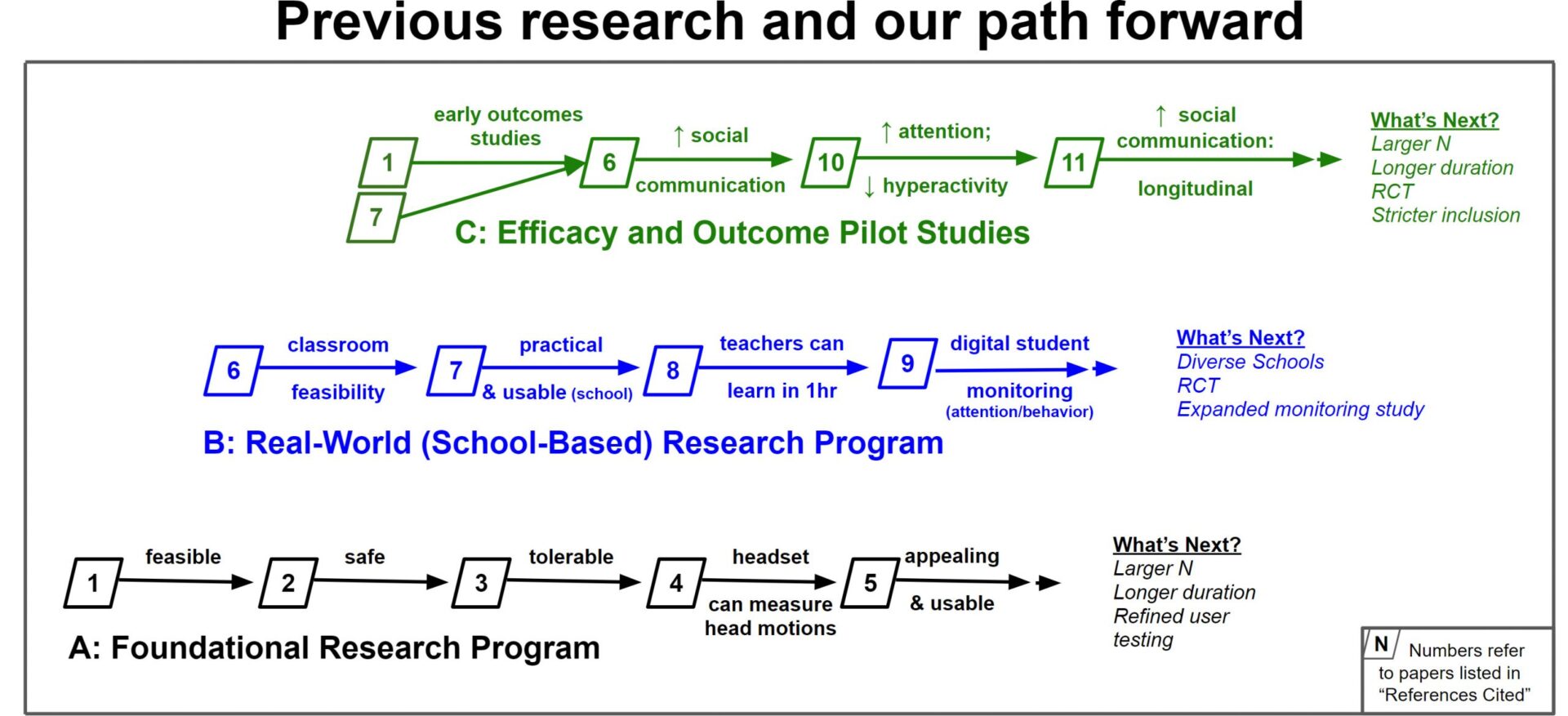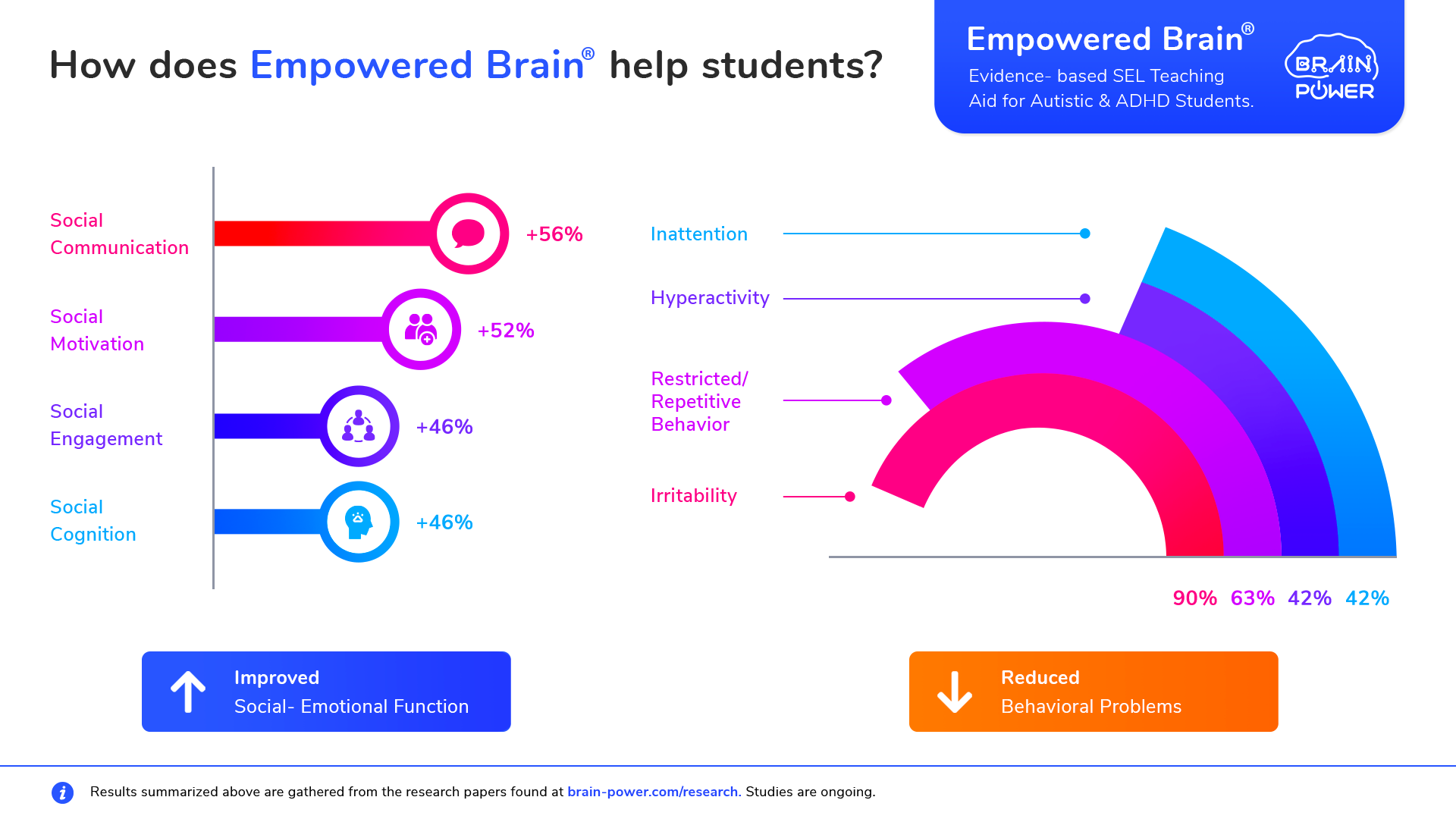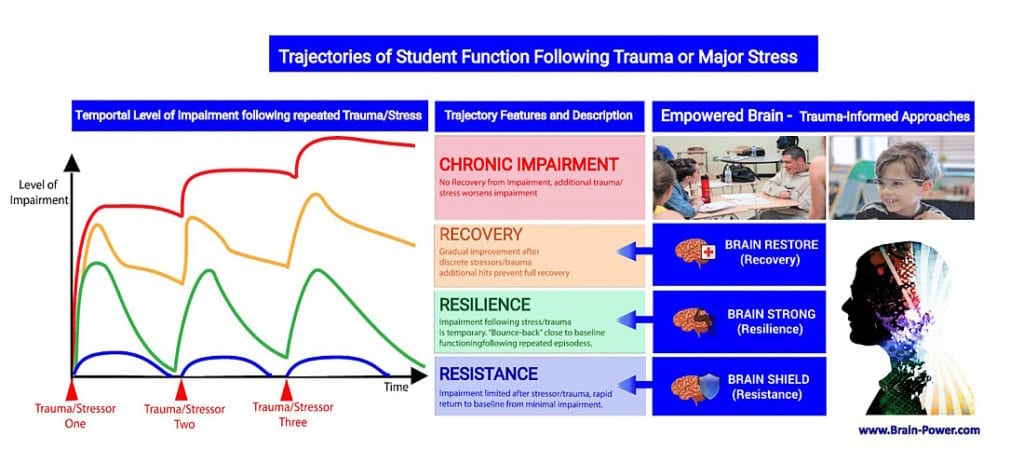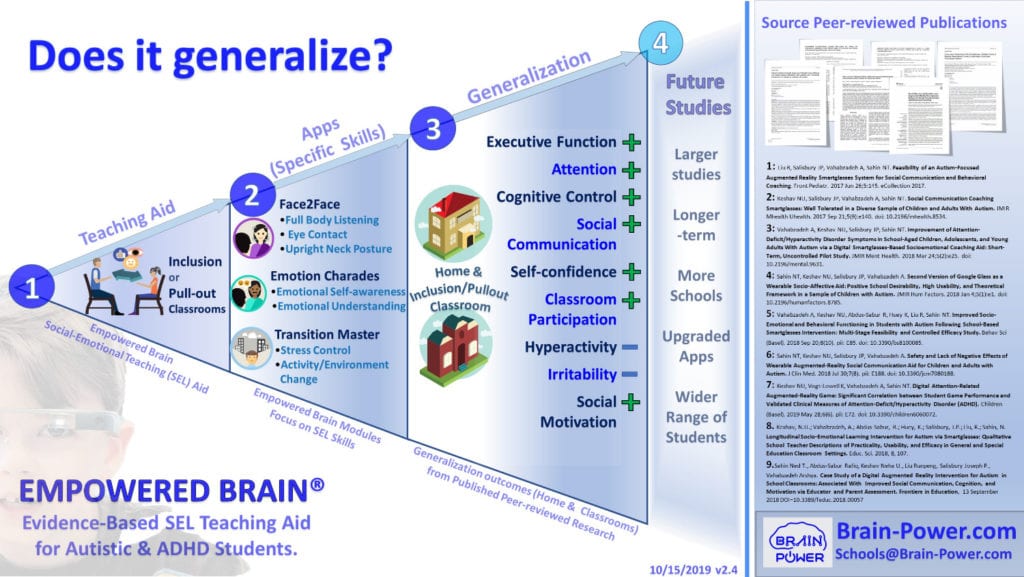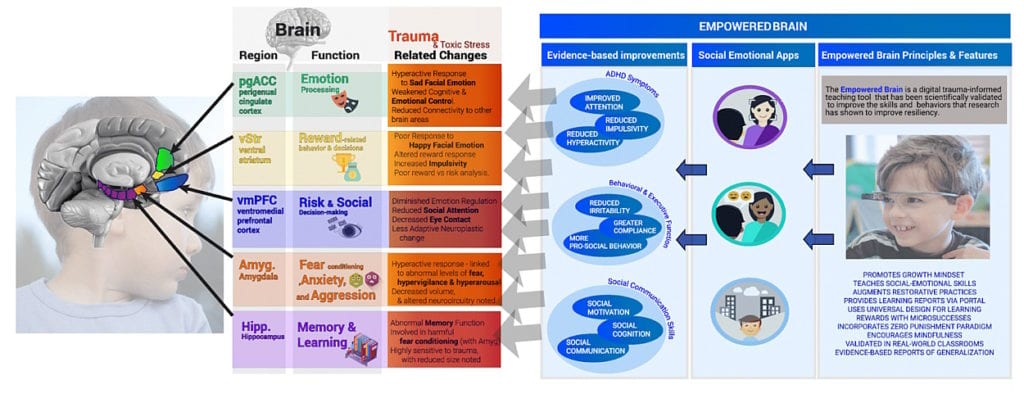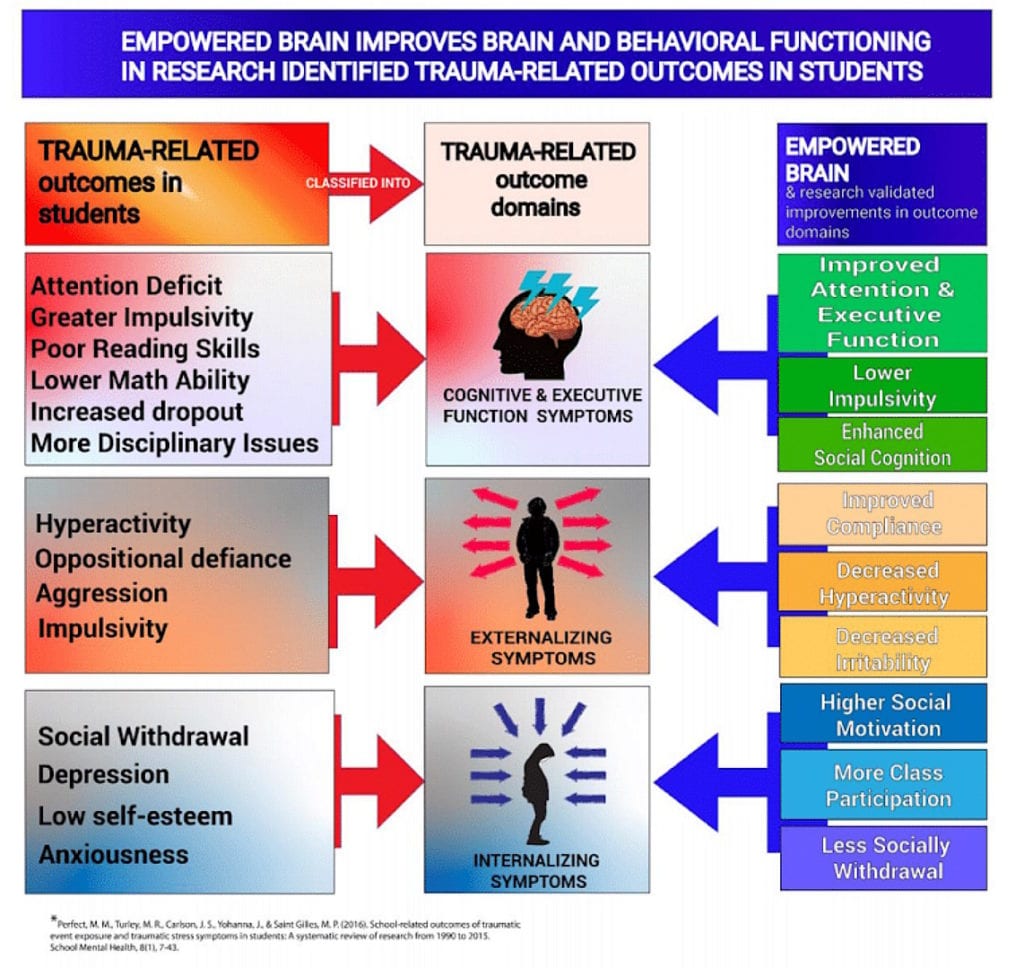The Science Behind Empowered Brain™
Evidence from professional research that validates Brain Power’s products and methods.
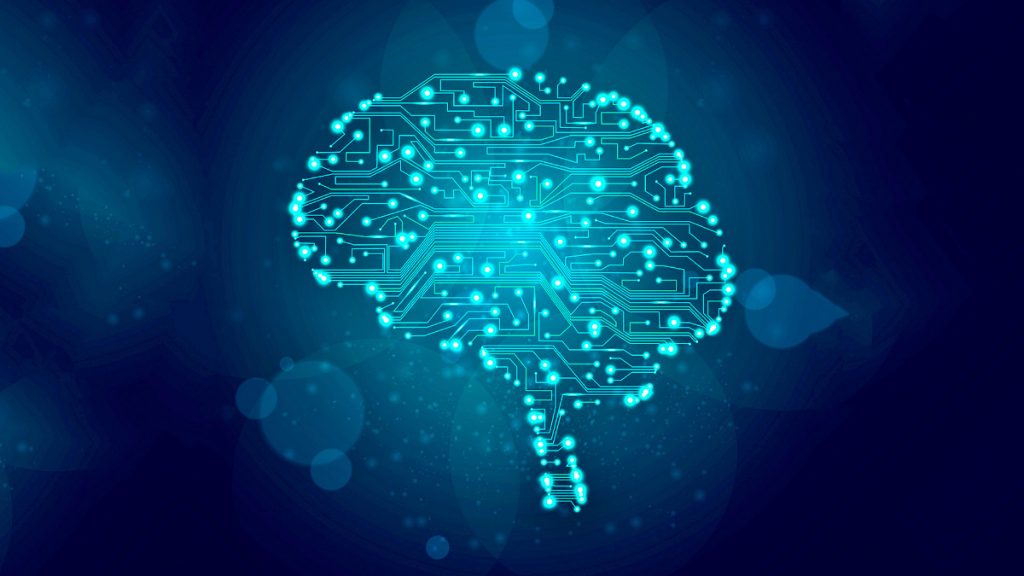
The Most Scientifically Validated Education Product
We could not be more committed to empowering the brains of your children / students. There is nothing more important.
This is why we have assembled a world-class team of brain scientists (PhDs and MDs). It is also why we have submitted all of our methods and results to the scrutiny of the international community of research scientists and clinicians, via the gold-standard process of peer-reviewed publication.
A large set of peer-reviewed medical research papers support Brain Power’s products – more than any product we know of in the education space. This page is an index of this ever-growing set of papers: You can browse the short, plain-language summaries here, then click any to explore the paper in greater detail.
Evidence of Therapeutic Efficacy
The professional, peer-reviewed research papers that are summarized in the tiles below report studies that report actual efficacy, namely whether Empowered Brain works and provides clinical benefit.
It is critical to ensure that time and energy are spent only on providing educational technologies that are evidence-based and proven to benefit students. The published, quantitative research summarized here shows that Empowered Brain® is an efficacious digital tool that reduces symptoms of autism and ADHD in school and lab settings. Additionally, qualitative research shows that teachers and parents have noticed improved educational, communication, and behavioral skills, among students who use the system. Further research is underway, including a randomized controlled trial (RCT) conducted independently of Brain Power at a top-ten US research university.
ADHD improvement after children used Empowered Brain
These ADHD-related symptoms continued to be improved 2 days after the use of the system. This preliminary study set the groundwork for further published and ongoing research on the effect of Empowered Brain use on ADHD symptoms.
As with all the brief summaries here, please click the buttons to learn more.
6-Week in-school study showing feasibility & efficacy
Four students clinically diagnosed with autism took part in this 6-week controlled study. Teachers reported that students with the highest usage of Empowered Brain had the greatest benefit. The technology was found to be feasible and efficacious.
Autism improvement after 2 weeks daily use: School case study
Brief Summary: Improved student behavior, social communication, motivation, and cognition followed a 16 session course of the Empowered Brain. This study was conducted at a public middle school and included a 1-week baseline period and 2-week intervention period when Empowered Brain was used. Improved student performance was reported by special education teacher, general education teacher, and parent.
This was our first research study in the school environment. Our work in schools is continuing, including larger groups and longer treatment periods.
Teachers rate smartglasses-based therapy as practical, non-distracting, & effective
Brief Summary: Educators found Empowered Brain technology to be easy to use, practical, and efficacious for student learning.
A special education teacher, general education teacher, and paraprofessional used the technology with a student in a real-world classroom for 2 weeks. Student verbal and non-verbal skills were described as being improved with the use of Empowered Brain.
Tolerability and Feasibility
These published studies represent Brain Power’s first line of research, namely investigating whether our methods and technology were feasible and tolerable in people with autism or ADHD.Children with autism and/or ADHD struggle with new interventions.
They commonly have attentional challenges, sensory sensitivities, and difficulties with transitions. The adoption of some assistive technologies is simply not realistic by many time-pressed teachers who are running a busy classroom. Empowered Brain is different and has been proven to be tolerable and usable by over 90% of children and adolescents with autism. Teachers and therapists have found that they can practically and feasibly use Empowered Brain in real-life classrooms and their own students.
Feasibility of Empowered Brain as a social-skills coach for autism
Brief Summary: This, the first published study into Empowered Brain, found it to be feasible to use in two children with autism.
The children were found to have improvement in speech, hyperactivity, irritability, lethargy, and behavior following use of Empowered Brain. This foundational research prompted our deeper study of Empowered Brain in students with autism and ADHD.
The paper is in the 90th Percentile among papers in all Frontiers journals (link)
SAFETY
Transient eye strain and dizziness was noted in one user, while another reported nasal discomfort as a result of wearing the Empowered Brain. This study of 18 children and adults with autism noted no major negative effects, and all minor effects were temporary.
Tolerability: Can autistic people comfortably use this wearable platform? (Yes)
Brief Summary: The majority of the 21 children and adults with autism in this study tolerated and were able to use the Empowered Brain for over an hour (91%, n=19).
Users of Empowered Brain surpassed their caregivers’ expectations in 71% of cases. Users found the system comfortable in nearly all cases (94%).
Desirability
Brief Summary: Children with autism rated the Google Glass hardware of Empowered Brain to be desirable and acceptable for both home and school use as an assistive aid.
The 8 children in this study, who had a wide range of autism severity and age, all rated Google Glass as desirable. Parents found the experience of testing and trying Google Glass to be surprisingly positive in 75% of cases.
This is the first paper in the academic literature with Google Glass 2nd edition, which Brain Power received a year before release, as a Google partner.
Concussion and TBI diagnosis support
Traumatic Brain Injury (TBI) is the leading cause of death in young people, and there is a strong need for a light-weight, cost-effective device that requires little training to diagnose or support diagnosis of TBI at the point of injury (e.g. a sports field).
ADHD
These published studies relate to attention-deficit / hyperactivity disorder (ADHD).
Millions of students in the US struggle with ADHD (~11%), and millions more have some degree of inattention or hyperactivity. These students don’t reach their educational potential, and can also increase the demands on educators. While many children now receive psychiatric medication to help them with their symptoms, research has shown that Empowered Brain can reduce symptoms associated with ADHD. Multiple studies on Empowered Brain have demonstrated decreased hyperactivity, inattention, and impulsivity. Preliminary results also suggest that the Empowered Brain can predict the severity of ADHD symptoms, providing teachers with another powerful tool to inform their instructional strategies. Additional research is actively underway.
Elementary school study shows decrease in symptoms of autism and ADHD
Brief Summary: After use of Empowered Brain, marked decrease in hyperactivity, irritability, and social withdrawal was found in elementary school students.
Four students clinically diagnosed with autism took part in this 6-week controlled study. Teachers reported that students with the highest usage of Empowered Brain had the greatest benefit. The technology was found to be feasible and efficacious.
ADHD improvement after school-age children used Empowered Brain
Summary: Children with autism had decreased symptoms of hyperactivity, impulsivity, and inattention, after using the Empowered Brain system.
These ADHD-related symptoms continued to be improved 2 days after the use of the system. This preliminary study set the groundwork for further published and ongoing research on the effect of Empowered Brain use on ADHD symptoms.
Autism
These published studies relate to autism.
Over 550,000 US students have autism and are on IEPs, placing a huge demand on an already stretched special educational system. Autistic students have worse long-term educational, health, job, and relationship outcomes compared to their peers, so an intervention that accommodates their needs and fits within the school’s system well can unlock much of this potentially lost potential. Core challenges in autism include social and emotional skills. A wide body of research on Empowered Brain has shown that it can teach these skills and address a wide range of autism-related challenges. Empowered Brain is a transformative digital tool for special education, and these studies show that it is proven to improve social communication, cognition, motivation, and behavior.
Autistic people could comfortably use the Empowered Brain wearable platform
Brief Summary: The majority of the 21 children and adults with autism in this study tolerated and were able to use the Empowered Brain for over an hour (91%, n=19).
Users of Empowered Brain surpassed their caregivers’ expectations in 71% of cases. Users found the system comfortable in nearly all cases (94%).
Decreased autism symptoms after short daily sessions of Empowered Brain in classroom
Brief Summary: Improved student behavior, social communication, motivation, and cognition followed a 16 session course of the Empowered Brain. In this 3-week study conducted at a public middle school, enhanced student performance was reported by special education teacher, general education teacher, and parent.
Teachers rate smartglasses-based therapy as practical, non-distracting, & effective
Brief Summary: Educators found Empowered Brain technology to be easy to use, practical, and efficacious for student learning.
A special education teacher, general education teacher, and paraprofessional used the technology with a student in a real-world classroom for 2 weeks. Student verbal and non-verbal skills were described as being improved with the use of Empowered Brain.
Feasibility & efficacy of Empowered Brain confirmed in elementary school students
Brief Summary: Elementary Students had less hyperactivity, irritability, and social withdrawal following use of the Empowered Brain.
Four students clinically diagnosed with autism took part in this 6-week controlled study. Teachers reported that students with the highest usage of Empowered Brain had the greatest benefit. The technology was found to be feasible and efficacious.
Feasibility of Empowered Brain as a social-skills coach for autism
Brief Summary: This, the first published study into Empowered Brain, found it to be feasible to use in two children with autism.
The children were found to have improvement in speech, hyperactivity, irritability, lethargy, and behavior following use of Empowered Brain. This foundational research prompted our deeper study of Empowered Brain in students with autism and ADHD.
The paper is in the 90th Percentile among papers in all Frontiers journals (link)
Safety of Google Glass and Empowered Brain in autistic children and adults
Brief Summary: Empowered Brain use was found to have no negative effects in 87.5% of users.
Transient eye strain and dizziness was noted in one user, while another reported nasal discomfort as a result of wearing the Empowered Brain. This study of 18 children and adults with autism noted no major negative effects, and all minor effects were temporary.
Empowered Brain rated as desirable to wear at home and school
Brief Summary: Children with autism rated the Google Glass hardware of Empowered Brain to be desirable and acceptable for both home and school use as an assistive aid.
The 8 children in this study, who had a wide range of autism severity and age, all rated Google Glass as desirable. Parents found the experience of testing and trying Google Glass to be surprisingly positive in 75% of cases.
This is the first paper in the academic literature with Google Glass 2nd edition, which Brain Power received a year before release, as a Google partner.
Dr. Vahabzadeh is a prominent medical doctor in the US with many research publications. He is trained in child psychiatry, adult psychiatry, family medicine, and addiction medicine.
“As a child psychiatrist, I see many individuals with autism or ADHD, and interact closely with their concerned parents. Each situation is unique but families are united in hoping for self-sufficiency and social integration for their loved-ones. Empowered Brain excites me because it is a toolset based on technology not drugs, which empowers people to learn social skills that increase self-sufficiency. These skills are transformative both at school-age and when seeking a job (and one of the best protectors against negative mental health outcomes is being employed). Overall, Empowered Brain in an exciting clinically-proven toolset for the young and old, severely affected and mild.”
– Dr. Arshya Vahabzadeh
School-Related Research
These published papers report research studies carried out in school settings. Some of these papers are also in groupings above.
Children spend over a third of their lives at school. Any digital intervention must not only meet children at their developmental level but should meet them in real-world settings where they will naturally build their social, emotional, and academic skills. The research studies have shown that the Empowered Brain is suitable and effective for a wide range of students, usable by educators of different backgrounds, and across a mixture of classroom and school settings.
Empowered Brain supports full Inclusion
Brief Summary: Daily sessions of Empowered Brain were conducted both in a dedicated special-education (pullout) classroom, and in a full-inclusion general-education classroom. Improvement in student symptoms of autism and ADHD were observed in both.
Specific domains of improvement included social communication, behavior, motivation, and cognition. Sessions lasted 10 minutes and took place once in the special-education classroom and once in the full-inclusions classroom, each day for two weeks. Multiple educators completed standardized clinical assessment questionnaires to assess the improvement.
Desirability of technology for home and school
Brief Summary: Children with autism rated the Google Glass hardware of Empowered Brain to be desirable and acceptable for both home and school use as an assistive aid.
The 8 children in this study, who had a wide range of autism severity and age, all rated Google Glass as desirable. Parents found the experience of testing and trying Google Glass to be surprisingly positive in 75% of cases.
This is the first paper in the academic literature with Google Glass 2nd edition, which Brain Power received a year before release, as a Google partner.
Teachers rate smartglasses-based therapy as practical, non-distracting, & effective
Brief Summary: Educators found Empowered Brain technology to be easy to use, practical, and efficacious for student learning.
A special education teacher, general education teacher, and paraprofessional used the technology with a student in a real-world classroom for 2 weeks. Student verbal and non-verbal skills were described as being improved with the use of Empowered Brain.
6-Week in-school study showing feasibility & efficacy
Brief Summary: Elementary Students had less hyperactivity, irritability, and social withdrawal following use of the Empowered Brain.
Four students clinically diagnosed with autism took part in this 6-week controlled study. Teachers reported that students with the highest usage of Empowered Brain had the greatest benefit. The technology was found to be feasible and efficacious.
Newsletter Signup
Sign up for our newsletter to learn about product releases, discounts, promotions and the latest thinking from Brain Power’s team!
Summary Images
Above: One of Brain Power’s scientific publications was selected by the editor of the research journal (“Children”) to be featured on the cover of the journal (pictured above — click to expand on your screen).
Click to expand any image:
Bibliography
- Liu R, Salisbury JP, Vahabzadeh A, Sahin NT. (2017). Feasibility of an autism-focused augmented reality smartglasses system for social communication and behavioral coaching. Frontiers in Pediatrics , 5, 145. frontiersin.org/articles/10.3389/fped.2017.00145
- Sahin N, Keshav N, Salisbury J, Vahabzadeh A. (2018). Safety and Lack of Negative Effects of Wearable Augmented-Reality Social Communication Aid for Children and Adults with Autism. Journal of Clinical Medicine , 7(8), 188. mdpi.com/2077-0383/7/8/188
- Keshav NU, Salisbury JP, Vahabzadeh A, Sahin NT. (2017). Social communication coaching smartglasses: well tolerated in a diverse sample of children and adults with autism. JMIR mHealth and uHealth , 5(9). mhealth.jmir.org/2017/9/e140/
- Salisbury JP, Keshav NU, Sossong AD, Sahin NT. (2018). Concussion assessment with smartglasses: validation study of balance measurement toward a lightweight, multimodal, field-ready platform. JMIR mHealth and uHealth , 6(1), e15.
- Sahin NT, Keshav NU, Salisbury JP, Vahabzadeh A. (2018). Second Version of Google Glass as a Wearable Socio-Affective Aid: Positive School Desirability, High Usability, and Theoretical Framework in a Sample of Children with Autism. JMIR Human Factors , 5(1). humanfactors.jmir.org/2018/1/e1/
- Sahin NT, Abdus-Sabur R, Keshav NU, Liu R, Salisbury JP, Vahabzadeh A. (2018). Case Study of a Digital Augmented Reality Intervention for Autism in School Classrooms: Associated with Improved Social Communication, Cognition, and Motivation as rated by Educators and Parents. Frontiers in Education, 3, 57. doi.org/10.3389/feduc.2018.00057
- Keshav N, Vahabzadeh A, Abdus-Sabur R, Huey K, Salisbury J, Liu R, Sahin N. (2018). Longitudinal Socio-Emotional Learning Intervention for Autism via Smartglasses: Qualitative School Teacher Descriptions of Practicality, Usability, and Efficacy in General and Special Education Classroom Settings. Education Sciences , 8(3), 107. mdpi.com/2227-7102/8/3/107
- Liu R, Osada K, Vahabzadeh A, Sahin N. Experimental study demonstrates adult learners achieve high proficiency in use of Empowered Brain, a novel socio-emotional educational technology, following a single one-hour training session. Preprint.
- Keshav NU, Vogt-Lowell K, Vahabzadeh A, Sahin NT. (2019) Digital Attention-Related Augmented-Reality Game: Significant Correlation between Student Game Performance and Validated Clinical Measures of Attention-Deficit/Hyperactivity Disorder (ADHD). Children , 6(6), 72. doi.org/10.3390/children6060072
- Vahabzadeh A, Keshav NU, Salisbury JP, Sahin NT. (2018). Improvement of Attention-Deficit/Hyperactivity Disorder Symptoms in School-Aged Children, Adolescents, and Young Adults With Autism via a Digital Smartglasses-Based Socioemotional Coaching Aid: Short-Term, Uncontrolled Pilot Study. JMIR Mental Health, 5(2).mental.jmir.org/2018/2/e25/
- Vahabzadeh A, Keshav N, Abdus-Sabur R, Huey K, Liu R, Sahin N. (2018). Improved Socio-Emotional and Behavioral Functioning in Students with Autism Following School-Based Smartglasses Intervention: Multi-Stage Feasibility and Controlled Efficacy Study. Behavioral Sciences , 8(10), 85. mdpi.com/2076-328X/8/10/85
- Salisbury JP, Keshav NU, Sossong AD, Sahin NT. (2018) Concussion Assessment With Smartglasses: Validation Study of Balance Measurement Toward a Lightweight, Multimodal, Field-Ready Platform. JMIR Mhealth Uhealth. 6(1):e15. doi:10.2196/mhealth.8478
- Salisbury JP, Liu R, Minahan LM, Shin HY, Karnati SVP, Duffy S, Keshav NU, Sahin NT. (2018) Patient Engagement Platform for Remote Monitoring of Vestibular Rehabilitation with Applications in Concussion Management and Elderly Fall Prevention. IEEE International Conference on Healthcare Informatics (ICHI), New York, NY, 422-423, doi: 10.1109/ICHI.2018.00082.

